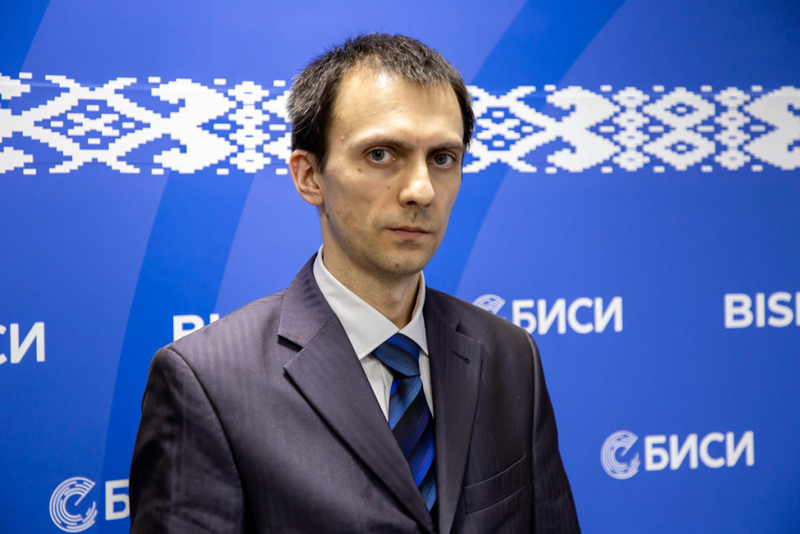The upward trends and drivers of economic growth in the region, which became apparent after the first half of the year, were discussed by Diana Kurilo, editor-in-chief of the Vitbichi city newspaper, and Andrei Mishin, analyst of the Belarusian Institute of Strategic Research.

– Mr. Mishin, following January-June 2024, data on the socio-economic development of the regions have been published. And the first thing we see from the figures is that agriculture is demonstrating an increase in indicators this year. Is the industry starting to have a noticeable impact on the region's economy?
– This year, Vitebsk region shows an upward trend in agriculture – agricultural output has increased by 11 percent (10.2 percent in the country). The positive situation is for meat (an increase of 8.4 percent), milk (7.3 percent), and eggs (28 percent), that enables us to increase production from processors with filling both the domestic market and food exports.
The situation in the fields is favorable. While maintaining the pace of harvesting and increasing yields (the average yield in the region is around 25 centners per hectare, but there are districts that passed 35 centners per hectare), agriculture can form the basis for new growth, including in related activities — industry and trade. A lot depends on the weather conditions, but it is the human, rural worker, who defines the results of the work.
– What trends can we talk about in general based on the results of the economy in the first half of the year?
– The region's economy is in the "plus" according to key indicators of socio-economic development, but recent two months show a slowdown in growth rates. For example, there has been a steady gains in gross regional product (GRP) since the beginning of the year with a "peak" in January-April (a 5.6 percent increase), following the results of the 1st half of the year, the dynamics in the region slowed down to 4.2 percent (by the way, 5 percent in the republic). It should be emphasized that all key activities maintain positive dynamics, except for "electricity supply" sector (a negative contribution to the regional GRP increase is about a quarter of a percentage point). Manufacturing industries, which form a fifth of the GRP of the Vitebsk region, continue to have the highest positive impact. The influence of trade, construction and agriculture is noticeable.
– How is the industrial complex developing?
– In general, the industrial complex of the region provided a 5.9 percent increase in output in the first half of the year. The dynamics are positive, but it is industry that shows a slowdown in the growth of the main indicators after the peak values at the end of April: a decrease in output growth in the manufacturing industry (by 3.1 percentage points), a decrease in production in the energy sector (the decline in production increased by 3.7 percentage points).
At the same time, a stable high level of shipped innovative products remains (over 38 percent in the Vitebsk region, less than 25 percent in the republic). We can also note positive aspects in the issue of stocks of finished products — the amount of stocks decreased (compared to the same period in 2023, which excludes the influence of the seasonal factor) by 1.3 percentage points to 54.5 percent (64 percent in the republic).
– Trade has long been one of the engines of our growth — is this normal, are there any risks?
– Yes, the contribution of trade organizations to the GRP increase is significant (about 1 percentage point and this is the 2nd place after the manufacturing industry).
The region has been a leader in increasing the volume of wholesale trade for a long time, in recent months the pace has decreased and sometimes is inferior to the values for the Brest region, but it is still a stable increase "in good volumes". In the first half of the year, the Vitebsk region increased wholesale trade by 13.8 percent, subject to the formation of about 18.5 percent of the national turnover.
The core of such success is in effective foreign economic activity. Following the January-May results, the Vitebsk region provides the best dynamics of growth in goods exports (a 36.6 percent increase, the region provides a fifth of the republic's exports). To meet the needs of the manufacturing industry in conditions of high demand, imports of goods are also increasing (an increase of 40.3 percent, while the region accounts for only a tenth of the country's imports). The result of foreign trade is a balance (the difference between the volume of our sales abroad and the volume of purchases), and here Vitebsk region is the republican leader, providing a positive balance in foreign trade in goods of 1.2 billion US dollars.
At the same time, there is an opposite situation in retail. Vitebsk region provides a real increase in retail turnover by 6.2 percent, but this is almost 2 times lower than the national average dynamics (11.5 percent), formed by the acceleration of trade turnover in Minsk (19.8 percent). The low dynamics in the region is associated with the traditional imbalance — low wages in comparison with other regions (at the end of January-June 1,807.2 rubles, which is lower than the average salary in the country by 15.7 percent), the situation is worse only in the Mogilev region (1,787.1 rubles and 16.7 percent).
The price regulation policy implemented in the country has made it possible to contain the inflation rate and ensure an increase in real wages by 12.3 percent, but this is again the lowest level among the regions (on average, 13 percent in the republic, 14.4 percent in the leading Mogilev region). Such an imbalance complicates the situation on the labor market, "washing out" the most competent and young personnel to the capital and other regions of the country and abroad.

